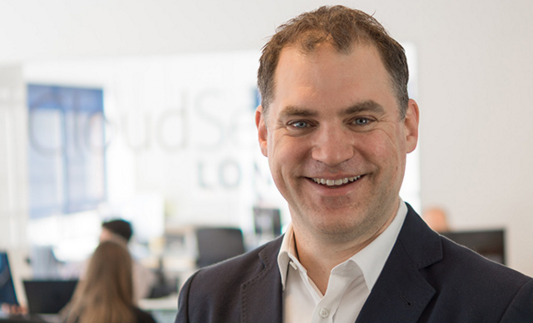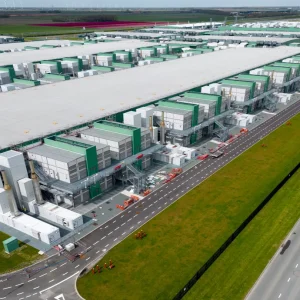
Richard Britton, MD at Salesforce Partner Cloudsense developer of a quote to cash platform on the Force.com platform.
CBR: What does Cloudsense do?
Richard Brittan: We have applications built specifically for telecoms firms like Telefonica, which allows the people to put together anything from simple one off sales orders through to very sophisticated bundles with the complexity you’d expect in telecoms.
If you try to create the solution without CPQ and quote to cash, what happens is it becomes impossible to handle the sophistication around different pricing bundles, different tariffs, upgrades and changes. So it’s impossible to get this customer service across all channels, including, ecommerce, mobile or tablet based contact sales, or a call centre. And that’s what Cloudsense brings to it. We have specific industry experts which work with the team and the client’s systems integrators. Salesforce CRM is dealing with the interaction with the customer and Cloudsense, quote to cash is dealing with the transaction."
CBR: Will Cloudsense move to the new Salesforce App Cloud?
RB: "The App cloud is the bringing together of several different capabilities that Salesforce has and enabling it further. We have always worked in a continuous integration approach with heartbeat releases and major releases, three times per year in the same way that Salesforce does.
Because the guard rails are predefined by what Salesforce can and can’t do we can’t create capability which would fundamentally break our customers business. With any upgrade you need to regression test what you are using. When Salesforce brings out a new release it will go into everyone’s sandbox and they’ll need to go through the process.
But I think certainly the tools are much stronger than they were. It’s the case studies and ‘reference-ability’ that create that continual dev ops environment and add new features and functionality. It is a world away from where it was five years ago. I’ve got some excellent developers who have a long pedigree in Java and C++ and three or four years ago they would have moaned about the lack of tooling around Salesforce and having to hand crank everything. They wouldn’t say that today."
CBR: What’s changed?
RB: "The key thing is that IT functions have finally been freed up to focus on process, product and experience in a way that just wasn’t true if you roll back the clock a few years because there was a lot of time looking at tin and wires and spending thought time rather than actually delivering a better experience. And its no coincidence that we’re seeing massive consumerisation of business technology because of the time to think it through."
CBR: How does the relationship with Salesforce work?
RB: "They will be trialling new features and functions and they’ll get in touch with ISVs to test these things out. So I will run proof of concepts and early stage customers will be found what want to work on it. And generally see a maturity curve over two to three years."
"So there are a few major headline things which they’ve dropped. But they focus on the things they get an outcome from. They are looking across at marketing, all the way through the integration layer, they are looking at data and customer experience – and by bringing it together they’ll have something much better. And I’ll challenge – what’s the alternative? What’s better?"






